Product Solutions
Portable Oxygen Concentrators
POCs have become far more reliable, economic, small, and lightweight
To keep pace with the myriad reimbursement challenges that have bombarded the oxygen industry over the past several years, providers continue to look for ways to streamline processes and cut operating costs. A growing strategy is to adopt a portable oxygen concentrator (POC) model, which has helped providers to meet referral and patient demands while driving operational efficiencies in their business.
POCs in general have become far more reliable, economic, small, and lightweight than previous models, allowing today’s oxygen patient to be more mobile than ever before. With each new iteration of POC, providers are seeing a better profit margin.
For patients, POCs have added a freedom that’s been unattainable in other oxygen technologies. With POCs, patients can more easily travel via air, rail, boat and car with higher confidence and comfort. They like not having to call to request tank refills. They like not having to wait for deliveries. They are welcoming independence, flexibility and a sense of normalcy back into their lives. Moreover, increased ambulation has been demonstrated to improve patient outcomes and reduce the probably of hospital admissions.
In terms of innovation, POCs keep getting smaller and battery lives longer. Moreover, they are starting to include remote connectivity, which is currently allowing providers to be able to manager their “fleet” of devices in the field to ensure that they are being used, monitor how they are being used, and in some cases remotely troubleshoot problems. Let’s take a look at some POCs on the market:
POC Communicates Usage Data
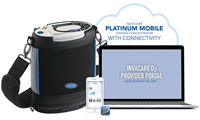 Invacare Platinum Mobile Oxygen Concentrator with Connectivity
Invacare Platinum Mobile Oxygen Concentrator with Connectivity
- POC, app and provider portal help give oxygen providers better asset utilization with control over costs.
- Providers have remote visibility to POC data to see how their POCs are being used.
- Hot-swappable, top loading batteries provide up to 10 hours of charge.
Invacare Corp.
(800) 333-6900
www.invacare.com
A vacation-ready portable oxygen option
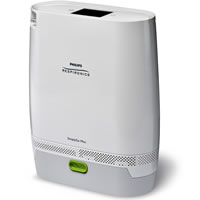 SimplyGo Mini p
SimplyGo Mini p
- Conforms to FAA standards, now available for on board aircraft use
- Designed and tested to be reliable and durable in real-world environments.
- Two battery options are available: a standard battery that lasts 4.5 hours, and an extended battery that typically lasts nine hours.
Philips
(800) 345-6443
www.philips.com
POC can run around the clock
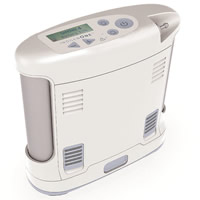 Inogen One G3
Inogen One G3
- The Inogen One G3 features five pulse flow settings with 1,050 ml output.
- Can be used 24/7, so it can supply medical oxygen at home or on the go.
- Provides 10 hours of battery life with two batteries; is airline approved; and weighs under 5 lbs. with one battery.
Inogen
(805) 562-0611
www.inogen.com
Portable oxygen in a small footprint
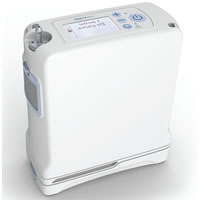 OxyGo FIT
OxyGo FIT
- Three-setting Intelligent Pulse dose device is about half the size of OxyGo.
- Small enough and quiet enough to be worn on a patient’s hip.
- Weighs 2.8 lbs. with a single battery and up to a five-hour battery life with a double battery.
Applied Home Healthcare Equipment LLC
(440) 788-4101
www.applied-inc.com
Designed for active patients on long-term oxygen therapy
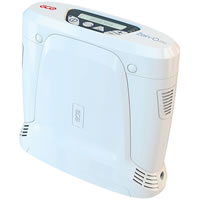 Zen-O lite
Zen-O lite
- The Zen-O lite weighs only 5.5 lbs. and delivers up to 1050 ml of oxygen per minute in pulse mode.
- Features rate responsive oxygen delivery, ensuring appropriate patient saturation.
- Design incorporates field replaceable sieve beds for convenient low-cost onsite maintenance.
GCE
(888) 659-2102
www.gcegroup.com
POC helps maintain consistent FiO2
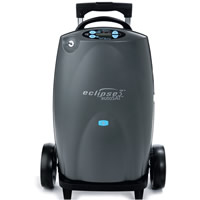 SeQual Eclipse3
SeQual Eclipse3
- Features autoSAT technology, which helps maintain a consistent FiO2 by servo-controlling the device to meet the patient’s changing respiratory rate.
- Approved for Rx of 0.5 to 3.0 LPM continuous flow, and has pulse dose volumes from 16mL to 192mL.
- In Pulse Dose Mode, if an inspiratory effort is not detected, the device will deliver a continuous flow of oxygen, continually searching for a breath every 15 seconds.
CHART Industries/SeQual Technologies
(800) 482-2473
www.sequal.com
This article originally appeared in the February 2018 issue of HME Business.
About the Authors
David Kopf is the Publisher HME Business, DME Pharmacy and Mobility Management magazines. He was Executive Editor of HME Business and DME Pharmacy from 2008 to 2023. Follow him on LinkedIn at linkedin.com/in/dkopf/ and on Twitter at @postacutenews.
Joseph Duffy is a freelance writer and marketing consultant, and a regular contributor to HME Business and DME Pharmacy. He can be reached via e-mail at [email protected].